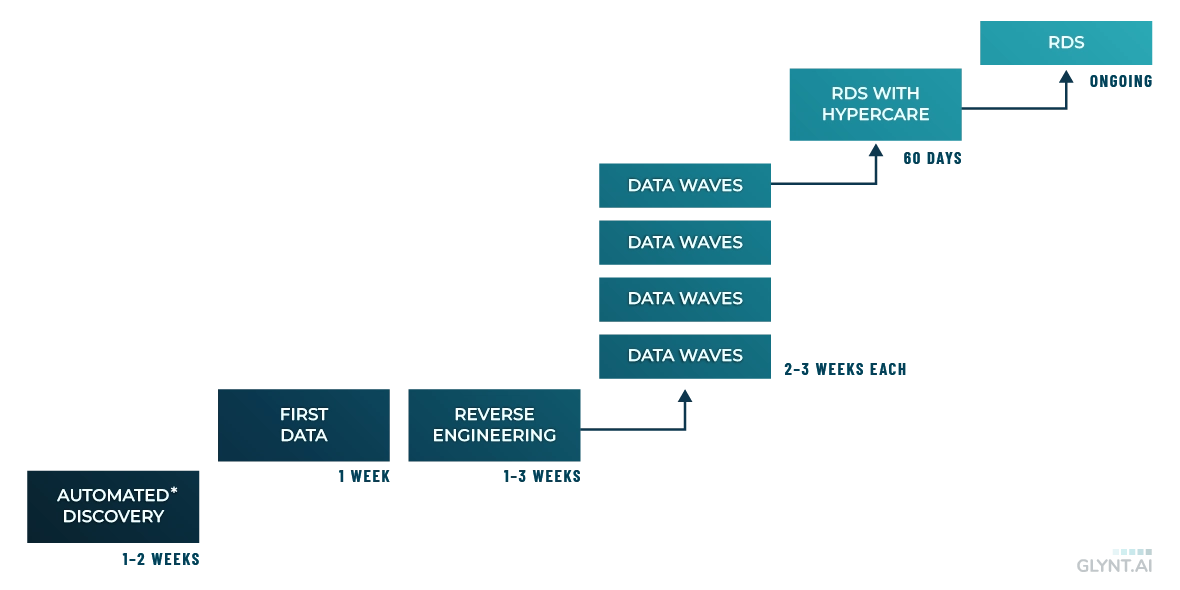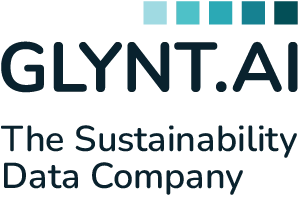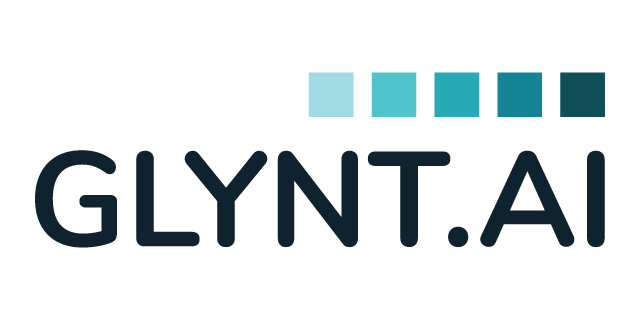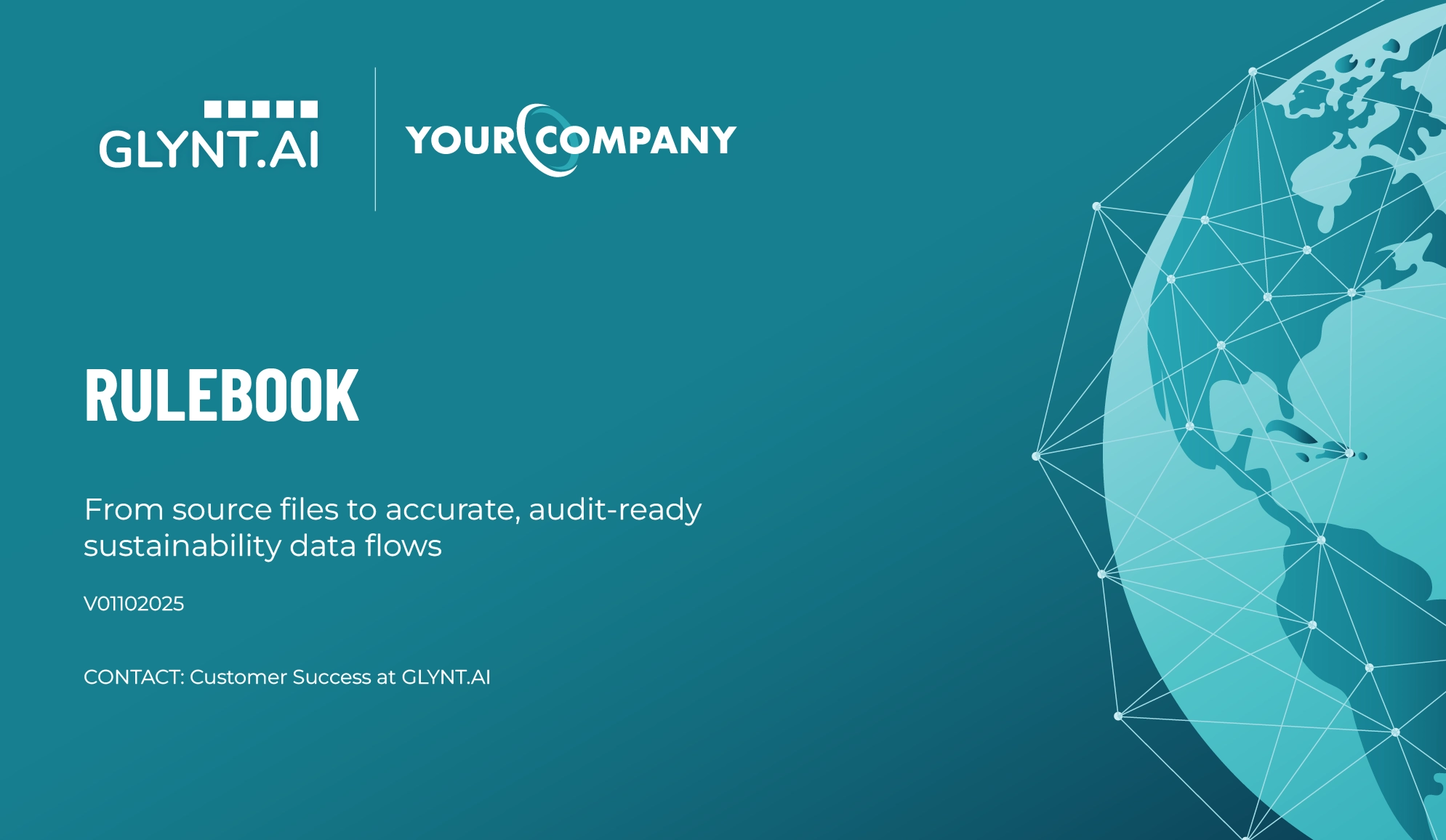The Migration Playbook
The Challenge: Better Data and Reduced Hours Seems Out of Reach
Sustainability teams are dedicated and hardworking, often the unrecognized heroes of their company’s climate strategy. In fact, GLYNT.AI wrote a blog post of appreciation! (See Gratitude for Sustainability Teams). But without automation the work of sustainability is challenging. Teams are stretched then, spending hours rounding up files, typing in data, tracking on spreadsheets, reviewing, reviewing and correcting errors. Finally the data comes out, often months after the year end. And the cycle immediately starts again.
So there is never a good time to add more work. Moving to automated sustainability data seems like such a great idea, but the effort to migrate is high and leads to total overload of an already busy team. Better seems just out of reach.
Your Data Migration Scenario
This Guide covers a range of migration scenarios, each based on a typical starting point. As you read the list, note your options; you can change your data system and keep your current reporting software; you can change your reporting software and your data system at the same time; you can use an automated data system and feed into your in-house reporting system. All of these options are enabled by GLYNT.AI’s built-in customizations.
Save time and money, while keeping your options open with GLYNT.AI’s AI-powered migration and onboarding methods.
Starting from zero
We’ve helped customers go from zero to sustainability hero before. Our AI-powered system helps you identify the right source files, simplifying your set up. Use our Automated Discovery and get results in days.
Today’s data prep system is too much work
Often GLYNT.AI gets calls when sustainability teams are worn out. They’ve assembled a system, their checking their data, and managing a myriad of point solutions. It’s not just the hours, is constant anxiety of managing so much detail. When migrating to our automated service, GLYNT’s AI learns from your current system. Then we’ll automate. While setting up the automation, GLYNT.AI is also setting the stage for data expansion and additional customization. Migrate today, expand tomorrow.
We’re changing software systems
Time to update data flows too. Perhaps you’ve been reporting for years and have outgrown your first reporting software. As you plan the switch, you realize the new system needs different data fields and formats. GLYNT.AI takes care of this for you. First we’ll learn from your current system, validate that we got that right, and then we’ll adjust and adapt the automation to build out your new data flows. The differences will be documented and reconciled, so you don’t have any surprises.
We’re shopping for sustainability software but have not yet selected a system
This is quite a common scenario, as it takes time to learn about software features and functionality. There are clear benefits to starting with an automated data service. First, GLYNT.AI has a built-in customization engine, so no matter which system you choose, we’ll get the right fields and formats prepared for you. Second, you can use the GLYNT.AI data to test and compare new systems. GLYNT.AI prepares a master, expanded data file for each customer, so we’re always ready to go where you want to go.
Note: Most sustainability and ESG software does not include data preparation services. The software literally says, “Upload your CSV here.” That’s your cue to get an automated data service to save time time and money. Also, some sustainability and ESG software says, “We streamline data preparation.” Check these claims out carefully. Often, they are sending data off-shore for manual entry, or offering a collection of point solutions that increases your workload. Only a complete automated system can deliver accurate data at low cost.
We’re hand-keying a lot of data
Large companies and platforms for energy management, real estate and facilities often have in-house teams (or consulting firms) hand-key data. We recognize the challenge of automating the hugely varied and constantly changing source files. But in a world of AI, there is no good reason to bear the high cost of hand-keyed data. It’s expensive, error-prone and slow. Use GLYNT.AI’s proven migration methods to reduce your pile of hand-keyed data. We use a phased approach that reduces risk while accumulating the savings.
The Key to Migration Efficiency: Let Our AI Learn From Your Data
Migration projects too take many hours when they require humans to document what is going today and what should happen next. In the world of sustainability, “setup files” are often used and these are a constant source of project delays. They take hours to prepare and often result in stale and incomplete data, holding up further work.
GLYNT.AI uses AI to remove this type of migration or onboarding friction. In particular, our AI learns from your current setup. Instead of asking you to do the work, we get the machine to do it for us. This leads to much faster migration and more accurate data. We also test, test and test again. Our library of reports – from chain of custody to validation testing to exceptions – demonstrates that our setup is correct. We don’t guess, we test. Reporting makes that result transparent.
GLYNT.AI has built five tools that deliver powerful AI-led results, while making it easier for you to verify and track results.
Automated Discovery
Sometimes a customer needs support in rounding up their source files, including identifying where they are located, and how to efficiently transfer them to GLYNT.AI. Our Automated Discovery makes this easy. We’ll help you set up a query of key systems and a transfer of files to GLYNT.AI. A good query is the one that is easy for your team to implement. If the result is that a huge number of unneeded files are transferred to GLYNT.AI, that’s not a problem. Within 24 hours of receiving the large blob of files, our AI will have them sifted and sorted to what really matters. With detailed reporting, everyone knows how to refine that initial query if needed and set up automated transfers going forward.
Reverse Engineering
If you’ve been reporting before, send GLYNT.AI your source files and reported data. We’ll need about 4 – 6 months of history. Then using AI and business logic, we reverse engineer your work. We’ll define which data items are captured from which source file and how they are transformed for reporting.
Rulebooks
Powerful AI needs a powerful interface. One reason ChatGPT took off because now we can all talk to AI in natural language. Similarly, GLYNT.AI has found pictures are the powerful interface for our AI. Our Rulebooks document the Reverse Engineering with pictures. No matter what your role – sustainability, finance, data science, AP, IT, and so on – you know what’s going on. When rules change, we simply archive one page and set up another. Rulebooks are easily maintained for our one-team, source-of-truth approach.
Transparent Testing & Reporting
GLYNT.AI has a complete system of reporting. You’ll get weekly status reports, exceptions reports, gap reporting and more. We build confidence in data from GLYNT.AI with transparent and detailed reporting.
Data Waves
There’s a lot going in any migration project. Without a disciplined focus, everyone gets scattered and frayed. Migration and onboarding projects take too long and face unexpected delays. Data Waves solve this problem. Data Waves are two–three-week mini-phases. Each phase automates a set of data – by site, by vendor, or by type – and is not complete until reports are issued and the customer has confirmed that the automation flows are ready to move into production. Data Waves derisk migration projects and put customers in control.
How It Works
GLYNT.AI applies the tools described in the previous section to each migration or onboarding project. A typical project timeline is shown below.
Readers may wonder, “Why does it take so long? Can we go faster?” While GLYNT.AI has internal speed records for rapidly producing audit-ready sustainability data in rush project mode, we know that inevitably rush projects lead to errors and rework. So if you have 100 sites or more, expect to spend 7+ weeks in onboarding.
In addition to project scale (number of sites, types of data services and so on), project timelines depend on customer teams. Migration projects go faster when customer teams can meet with GLYNT.AI each week for 30 to 45 minutes. This clears any open issues and confirms production-ready data. Often the weekly meeting is cancelled, as there are no issues to review. We also encourage customers to bring in the project’s stakeholders early in the project. GLYNT.AI can hear their concerns and issues, and ensure we meet their needs. They can be on-call thereafter. In sum, customer engagement is a key driver of migration speed.
With AI doing the heavy lifting, GLYNT.AI asks customers to do these straightforward tasks:
- Review first data. Talk to us about your findings and we’ll learn how to communicate more clearly.
- Release a Data Wave into production. For each Data Wave, the customer confirms the data is ready for production and automated data flows begin
- Test the data in your software and systems. Let’s make sure the data is ready to use. If not, we’ll re-configure the output file from GLYNT.AI
- Resolve ambiguities and confusion. Our AI will point these out, we need customers to weigh in, then GLYNT.AI can proceed with automation
Overall, we encourage customers to complete migration and onboarding projects in under 90 days. GLYNT.AI is highly scalable, and our systems are not constrained by the number of sites or data items. The real challenge in setting up large migration projects is focus and discipline. For that reason, we’ll work with you to de-risk migration, no matter your size.
The Timeline of a Typical Migration or Onboarding Project

*Upon customer request | RDS: Regular Data Services
Testing and Reporting
For many customers, working with GLYNT.AI is the first chance they have had to get out of the daily grind of data, data, data and move into insights, analytics and planning. Part of that transition is gaining familiarity with data prepared by GLYNT.AI and gaining confidence that it is accurate and reliable. Extensive testing and reporting addresses these objective.
GLYNT.AI’s suite of Trusted Data Reports is shown below. During the migration project, we’ll issue Weekly Updates, Chain of Custody and Exceptions reports, so customers can track GLYNT.AI’s work and respond to any action items.
At the end of the migration project, additional reports are added: Gap tracking, Master Assets Table, Accuracy and Validation Tests and Change Management reporting. The entire package of Trusted Data Reports moves to a monthly reporting cadence. Our library of reports keeps sustainability teams focused on just key issues – such as chasing down a missing file – and not the daily grind of data prep. Also, the reports can be placed into an audit-ready archive, speeding and simplifying data checks during audits.
GLYNT.AI encourages customers to send us their favorite data tests. We’ll add them to our test scripts if they are not already included. Customers can simply read the test results; we test your data so you don’t have to.
GLYNT.AI’s testing and reporting features demonstrate how we leverage the power of our completely automated system for an improved customer experience. We have been audited and are SOC 1 certified, through testing and reporting we deliver that value to you. And testing means we fix errors before they get to you, saving hours of time and frustration.
TRUSTED DATA REPORTS FROM GLYNT.AI
Data Accuracy
From PDF to Data
Data Validation
Check for Conformance
Seamless Data Flow
No Loading Errors!
Data Gaps
Minimize Estimates
Weekly Project Status
Project Status Updates
Chain of Custody
Was Everything Processed?
Exceptions
What Was Not Processed and Why?
Change Management
Assets and Data Sources
Next Steps
Talk to GLYNT.AI about your migration plans and concerns, often we’ve seen the issue before and have built a cost-effective solution. And if you are just getting started with sustainability data and reporting, we’re happy to create a customized data automation plan, including Automated Discovery if needed.
Like this content and want to take it to-go? Download a PDF version
More Like This
Three Pillars of Value
Read the Guide
The Sustainability Data Buyer’s Guide: Unlock Value with Automation
Manual data is slowing teams down. See how top enterprises cut prep time, reduce costs, and increase accuracy — with finance-grade, audit-ready automation.
Read the Guide
The Reliability Index for Sustainability Data
Quickly measure the accuracy and reliability of any sustainability data preparation system.
Learn More
Contact GLYNT.AI

New to GLYNT.AI
© 2025 GLYNT.AI, Inc. | #betterdatafortheplanet | Terms of Use | Privacy Policy | Compliance Framework




